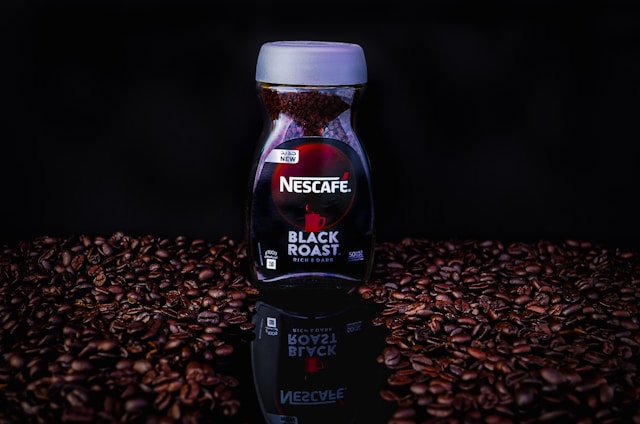Nescafé, one of the world’s most recognized coffee brands, has managed to stay relevant and appealing for decades. Its marketing strategy is a blend of innovation, emotional connection, and adapting to market trends. Here’s an in-depth look at how Nescafé has crafted its success story, with some noteworthy campaigns that have resonated globally.
The Birth of Nescafé
Nescafé was born in the 1930s when the Brazilian government asked Nestlé to find a way to use surplus coffee beans. Nestlé’s scientists developed a soluble coffee that preserved the rich flavor of the beans. In 1938, Nescafé was launched, providing a convenient coffee solution that quickly gained popularity.
Building a Global Brand
Nescafé’s journey from a new product to a global icon involves several key strategies. Let’s explore the tactics that have kept the brand fresh and appealing.
Consistent Brand Messaging
Consistency has been a cornerstone of Nescafé’s marketing. The brand has maintained a clear and consistent message centered around the idea of enjoying a good cup of coffee anytime, anywhere. This message is simple but effective, making it easy for consumers to understand what Nescafé stands for.

Emotional Connection
Nescafé has mastered the art of creating an emotional bond with its consumers. The brand often uses the theme of social connection in its advertising, showing how coffee can bring people together. One of the most memorable campaigns is the “Nescafé Gold Blend Couple” series in the UK (featuring a young Anthony Head), which ran from 1987 to 1993. This soap opera-style ad featured the evolving romance of two neighbors, brought together by their love of Nescafé. The campaign was a hit, captivating viewers and embedding Nescafé into popular culture.
Digital Transformation
As digital media grew, Nescafé adapted quickly. The brand embraced social media and digital platforms to engage with a younger audience. In 2014, Nescafé took a bold step by moving its entire website to Tumblr, aiming to connect with a younger demographic that was more active on social media. This move was a statement of the brand’s commitment to innovation and understanding of digital trends.
User-Generated Content
Nescafé has successfully harnessed the power of user-generated content to enhance its marketing efforts. By encouraging customers to share their coffee moments online, Nescafé creates a sense of community. The #GoodMorningWorld campaign invited users to share their morning routines with Nescafé, creating a global mosaic of user experiences and strengthening the brand’s connection with its consumers.
Localization
While maintaining a global brand image, Nescafé also adapts its marketing strategies to local markets. Understanding local tastes and preferences is key to the brand’s success in different regions. For instance, in Japan, where there is a strong culture of coffee vending machines, Nescafé introduced the Nescafé Ambassador program. This initiative placed coffee machines in offices and allowed employees to pay for coffee using a mobile app, catering to the local work culture and payment habits.
Sustainability Efforts
Modern consumers are increasingly concerned about sustainability, and Nescafé has addressed these concerns through its initiatives. The Nescafé Plan, launched in 2010, aims to improve the livelihoods of coffee farmers, promote responsible farming practices, and ensure sustainable sourcing. This commitment to sustainability not only helps the environment but also enhances the brand’s reputation among socially conscious consumers.

Innovative Products
Product innovation is another key aspect of Nescafé’s strategy. The brand continuously introduces new products to cater to evolving consumer preferences. From Nescafé Dolce Gusto, a coffee capsule system offering a variety of coffee styles, to Nescafé Azera, a barista-style instant coffee, the brand ensures there is something for every coffee lover.
Engaging Campaigns
Nescafé’s marketing campaigns are often creative and engaging, making them memorable and impactful. Here are a few standout examples:
“REDvolution” Campaign
In 2014, Nescafé launched the “REDvolution” campaign to rebrand its iconic red mug and reinforce its brand identity. The campaign included a new packaging design and a series of advertisements highlighting the simplicity and joy of sharing a cup of Nescafé. The rebranding effort helped refresh the brand’s image and appeal to a younger audience.
Nescafé 360-Degree Video Experience
Embracing new technology, Nescafé created a 360-degree video experience on Facebook to showcase its commitment to sustainable farming. The video took viewers on a virtual tour of a coffee farm, providing an immersive experience and educating consumers about Nescafé’s sustainability efforts. This innovative approach helped the brand engage with tech-savvy consumers in a meaningful way.
Lessons From Nescafe’s Marketing Strategy
Nescafé’s marketing strategy is a blend of consistency, emotional connection, innovation, and adaptability. By understanding its audience and staying ahead of market trends, Nescafé has built a strong brand that continues to thrive in a competitive market. Its campaigns, from the “Nescafé Gold Blend Couple” to the “REDvolution,” showcase the brand’s ability to connect with consumers on an emotional level while staying relevant through digital transformation and product innovation. For marketing professionals, Nescafé offers a wealth of inspiration on how to build and sustain a successful brand.
Here are five key lessons to draw from Nescafé’s strategy:
1. Consistency in Brand Messaging
Nescafé has maintained a clear and consistent brand message over the decades. The brand is synonymous with convenience and quality, emphasizing the joy of coffee anytime, anywhere. This consistency has helped embed Nescafé deeply in the minds of consumers. Marketers should aim to create and maintain a coherent brand message that resonates with their target audience and builds long-term brand loyalty.
2. Emotional Connection with Consumers
Nescafé excels at creating an emotional bond with its audience. Campaigns like the “Nescafé Gold Blend Couple” series show how storytelling can engage consumers on a deeper level. By tapping into emotions and personal experiences, brands can build a stronger connection with their customers. Marketers should focus on creating campaigns that evoke emotions and tell relatable stories.
3. Adaptation to Digital Trends
Nescafé’s swift embrace of digital transformation demonstrates the importance of staying ahead of technological trends. Moving its website to Tumblr in 2014 to engage a younger audience is a prime example. Marketers should be agile and ready to adapt to new digital platforms and trends, ensuring their brand remains relevant and accessible to a tech-savvy audience.
4. Leveraging User-Generated Content
Nescafé’s use of user-generated content, such as in the #GoodMorningWorld campaign, showcases the power of involving customers in the brand narrative. Encouraging customers to share their experiences not only builds community but also provides authentic content that enhances brand credibility. Marketers should find ways to engage their audience and encourage them to contribute content, fostering a sense of ownership and loyalty among consumers.
5. Localization and Cultural Sensitivity
While Nescafé maintains a global brand image, it also tailors its marketing strategies to local markets. The Nescafé Ambassador program in Japan, which places coffee machines in offices and uses mobile payments, is an example of how understanding and adapting to local preferences can drive success. Marketers should ensure their campaigns and products are culturally relevant and resonate with local audiences while maintaining overall brand consistency.

